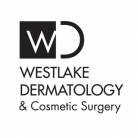

In recent years, the use of non-surgical cosmetic treatments like Botox and fillers for aging prevention has soared in popularity. According to the American Society of Plastic Surgeons (ASPS), minimally invasive cosmetic procedures increased by 2% in 2023 alone, reflecting a growing demand for these services. The use of such preventative cosmetic treatments can to delay the onset of aging can prove to be extremely valuable later, especially when they are performed by a highly experienced provider.
While these non-surgical cosmetic treatments are less painful and risky compared to cosmetic surgery procedures, some side effects are still possible. Much of these issue stems from the process of injection rather than the neurotoxin or filler itself. Common side effects associated with injectables can include the following:
- Pain at the injection site
- Swelling or bruising at the injection site
- Bleeding at the injection site
- Redness
- Headache
- Fever or chills
- Injection site infection
Fortunately, there are some easy ways to minimize the chance or duration of these potential side effects. If you are considering injectables as a form of aging prevention, here’s what you can do to keep unwanted side effects at bay:
Choosing the Right Provider
The first step to minimizing side effects is consulting a licensed professional. Licensed providers undergo extensive training and adhere to safety standards, reducing the likelihood of complications. Their expertise ensures proper technique and product use, key factors in mitigating risks.
The provider you select can significantly impact the safety and success of your cosmetic procedure.
Qualifications Matter
Seek out qualified and experienced professionals. Certifications from reputable organizations, such as the American Board of Plastic Surgery or equivalent, indicate a provider’s commitment to safety and quality.
Research Local Experts
Prioritize practitioners with extensive experience in treatments like Botox or Juvederm. Check reviews, ask for before-and-after photos, and ensure the provider uses FDA-approved products.
Beware of Unlicensed Providers
Unlicensed practitioners often lure patients with lower prices, but the risks of counterfeit products and unsafe techniques are significantly higher. Always verify credentials and avoid deals that seem too good to be true.
Preparing for Your Procedure
Another key way to minimize unwanted side effects it to properly prepare for the treatment. Here are some basic steps to follow before your injectable treatment:
Avoid Blood-Thinning Substances
- Alcohol: Abstain for at least 24 hours before the procedure.
- Medications: Avoid aspirin, ibuprofen, and other blood thinners unless otherwise directed by your doctor.
- Supplements: Refrain from taking fish oil, vitamin E, or other supplements that may increase bruising.
Consult Your Provider
Every procedure and individual is unique. Discuss your medical history, current medications, and any allergies with your provider to receive tailored advice.
Post-Procedure Care Tips
Proper aftercare is also vital to minimizing side effects and ensuring optimal results. Make sure to always follow any post-injection instructions provided by your injector! Along with that guidance, these tips have also been shown to help minimize bruising, swelling, and injection-site irritation:
- Avoid Touching the Treatment Area
Refrain from touching, rubbing, or pressing on the injection site for at least six hours after your treatment. Pressure on the area can traumatize blood vessels and exacerbate bruising. Only massage the area if explicitly instructed by your provider.
- Use a Cold Compress
Apply a cold compress or cold pack intermittently during the first eight hours after treatment. This helps minimize bruising and swelling. Gently apply the compress for 5–10 minutes each hour.
- Sleep with Your Head Elevated
On the first night post-treatment, prop your head up with extra pillows to reduce swelling. Avoid lying flat or sleeping on your face for at least 3–4 hours to prevent pressure on the treated area.
- Avoid Excess Physical Activity
Strenuous exercise can increase your heart rate and blood flow, which may worsen bruising. Avoid aerobic activities, weight training, and other vigorous exercises for 2–3 days following your injections.
- Stay Hydrated
Proper hydration is crucial for optimal recovery and skin health. Drinking plenty of water helps flush out toxins, reduces inflammation, and promotes healing of the injection sites. Aim for at least eight glasses of water daily in the days leading up to and following your treatment.
- Avoid Excessive Sun Exposure
UV rays can increase swelling and irritation at the injection site, potentially affecting results. Avoid direct sun exposure and tanning beds for at least 48 hours after your treatment. If you need to go outdoors, apply a broad-spectrum sunscreen with SPF 30 or higher and wear a wide-brimmed hat.
- Skip The Alcohol
Alcohol dilates blood vessels and increases the risk of bruising. For optimal results, avoid consuming alcohol 1–2 days before and after your injectable procedure.
- Take Arnica Montana
Consider using Arnica Montana, a natural remedy known for reducing pain and bruising. You can take it in pill form or apply it topically to the treated area. Some practitioners may recommend starting the supplement a few days before your appointment for added benefits.
- Eat Pineapple
Pineapple contains bromelain, an enzyme that may help reduce bruising. Incorporate fresh pineapple into your diet during the first two days after your treatment to aid recovery.
- Boost Your Vitamin C Intake
Vitamin C promotes healing and strengthens blood vessels. To minimize bruising, take Vitamin C supplements or eat foods rich in the nutrient, such as oranges, strawberries, kale, or broccoli.
Preventative cosmetic procedures offer exciting possibilities for maintaining a youthful appearance. By choosing a qualified provider, properly preparing for your treatment, and following all post-injection instructions, patients can minimize side effects and enjoy long-lasting results.








